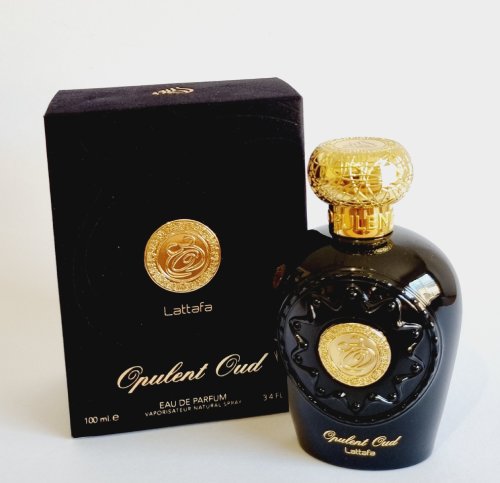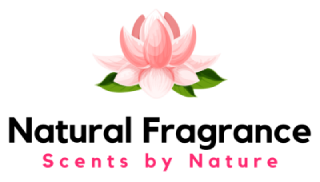What Is Saffron?
Saffron, also known as Zafaran or Kesar/Keshar, is a spice derived from the Crocus sativus plant. Because of its high price and the rich yellow colour it gives, it is often called “The Golden Spice”.
Currently saffron is commercially produced in Iran, Greece, Morocco, Spain, Kashmir and Italy. Iran is the most important producer of saffron both, in terms of volume and quality, and Spain being the largest importer of the spice.
Why is Saffron so expensive?

Saffron is a labour intensive crop, which makes it the most expensive spice. Each flower produces only three stamens that must be lovingly hand picked and carefully dried, taking about 160 flowers to produce just 1 gram of saffron.
Saffron significance in history
Cultivation and use of saffron spans more than 3,500 years. It has been traded and used across continents and even utilized as a treatment for over 90 disorders. Ancient Greek legends speak of soldiers embarking on perilous voyages to procure what was thought to be the most valuable saffron. Cleopatra, as per certain texts, used saffron in her baths for its cosmetic properties. Egyptian healers used this spice for treating gastrointestinal ailments.
In Roman times, it was used to promote wound healing and relieve upper respiratory complaints. In folk and Ayurvedic medicine, it was used as an expectorant, sedative, anti-asthma, adaptogen, emmenagogue and in various opioid preparations for pain relief during the 16th—19th centuries.
In ancient Mediterranean cultures, the spice was associated with strength, fertility, psychic sensitivity and sexual potency. It was a popular healing and cleansing ritual to add saffron to love sachets and potions.
This “Golden Spice” was also mentioned in the Old Testament in Songs of Solomon, along with myrrh, aloe, calamus and cinnamon, as one of the most precious spices.
Egyptians would mix it with honey, and Romans would sprinkle their marriage beds with it because this spice isbelieved to be aphrodisiac.
Throughout the history saffron has also been used in body washes, as a narcotic, in potpourris, in cosmetics, as an antidepressant, and as a spice – to both color and flavour dishes.
7 Amazing Saffron Benefits
This exotic Golden Spice does more than just flavour and colour your dishes. Despite its high cost, saffron has been valued in Ayurveda, Chinese, Unani, and Tibetan traditional medicine for its impressive health benefits. Nowadays, modern science has also begun to recognise the power of saffron’s bioactive compounds such as crocin, crocetin, picrocrocin, and safranal. Saffron is believed to help treat gastric disorders, lower depression, improve symptoms of premenstrual syndrome, reduce insulin resistance, and protect the heart.
Soothes an upset stomach
In Eastern medicine, saffron has traditionally been used to treat gastric disorders. It can help eliminate the burning pain, heartburn, and indigestion that comes with a stomach ulcer. Studies on animals show that crocin and safranal, two of saffron’s active components, have antioxidant properties that can reduce ulcer formation. If you are prone to ulcer, a pinch of saffron might be more beneficial that you think.
Lowers Depression
In the modern world today, depression has become more and more common. While there are lots of pills to treat depression, saffron has emerged as an effective and natural alternative. A study determined that saffron is comparable to the antidepressant imipramine for treating mild to moderate depression. Again, it is the crocin and safranal properties in saffron that work the magic. Both crocin and safranal modulate the neurotransmitters dopamine, serotonin, and norepinephrine, the brain chemicals that influence your mood.
Improves Pre-Menstrual Syndrome
Research has found that saffron can significantly reduce the symptoms of PMS that impact mood, behaviour, and pain. It is because of saffron’s ability to oinfluence the neurotransmitter serotonin. So ladies, next time you experience PMS, the relief might just be sitting right on your spice rack.
Lowers Insulin Resistance
An animal study found that when rats were fed a high-fructose diet, they developed insulin resistance – a condition in which your cells stop responding normally to the hormone insulin, which is a leading factor in the development of diabetes – along with many other pathological changes.
Crocetin, a major component of saffron, has antioxidant and anti-inflammatory properties that alleviate their insulin insensitivity.
It’s always best practice to limit our high-fructose intake in our diet, but saffron might be able to help or even prevent the negative impact of the occasional treats.Protects Your Heart
As mentioned before, saffron has antioxidant and anti-inflammatory properties, and these can promote healthy arteries. Animal studies have also shown that crocetin has the ability to lower cholesterol.
Some researchers believe that Mediterranean countries like Spain have low rates of cardiovascular diseases due to their heavy use of saffron. Feel like authentic saffron-infused paella tonight?Natural Aphrodisiac
A study by a team at the University of Guelph in Ontario, Canada has proven that saffron can increase sexual desire and improve human sexual function without any negative side effects.
In another study, the crocin in saffron has proved to be beneficial to the male reproductive system in improved mounting and erection frequencies in normal male rats.
In Ayurveda, saffron has been used to treat premature ejaculation, erectyle dysfunction, and low sperm count.
Cleopatra was said to bathe in saffron-infused water before a sexual encounter.
Studies have shown that saffron can stimulate libido and arousal, increase blood flow to the sexual organs, and boost stamina—for women just as well as for men.
Crocin in saffron was also found to potentially reverse the damage caused to the male reproductive system due to extended nicotine use.
Enhances Your Skin
Saffron has been used in cosmetics to help treat acne and blemishes, give luminuous complexion and improve skin texture.
Possible Side Effects
While it’s generally safe to consume saffron up to a certain amount per day, peopla who are pregnant and or breastfeeding, or have allergies should be more careful. Please always ask your doctor before consuming.
Just 1 – 5 strands of saffron a day is considered sufficient. While this exotic golden spice has many benefits, consuming too much can have adverse effects on your health.
Where to buy Saffron?
Due to its high price, there is a lot of fake saffron in the market. It is not uncommon to see subtitutes branded as safflower or marigold flower, they are completely different plants and are sold as saffron. Some people use other parts of the Crocus Sativus plant in place of the stigmas.
Therefore, you should always buy saffron from a trusted vendor. We source our saffron from Moshad, Khorasan, Iran, from a saffron farmer who has been in the business for more than 30 years. We buy only the best quality Persian/Iranian saffron, which is grade 1, or Sargol grade (only the red stigma tips). You can buy our saffron online.
It is natural to see some yellowish/orange tips on the stigmas, even in sargol grade. The lack of these orange tips might even mean the saffron strands are dyed.
There are some common ways to determine whether or not what you have bought is fake or adulterated:
- Drop a few strands in warm milk or water. Both real and fake saffron will change the liquid’s colour, but the real saffron will remain crimson, while the pretender will turn white.
- Mix in a small amount of baking soda to a cup of water, then add your saffron. The water-baking soda mix should turn yellow if it’s pure saffron. Fake saffron will turn the water red.
Storing Saffron
If stored carefully, saffron can retain its potency, aroma, and colour for a long time (about 2 years).
Please always store your saffron in an airtight container away from heat, moisture, and light.
Sources and References:
- “23 Proven health benefits of Saffron + Side Effects” by Joe Cohen from SelfHacked – Jun 19, 2018
- “Saffron: The Ayurvedic Perspective” by Nadia Marshall from Mudita Institute & Health clinic
- “26 Amazing Benefits of Saffron (Kesar) for Skin, Hair and Health” by Ravi Teja Tadimalla from StyleCraze – Mar 26, 2018
- “What Is Saffron? Saffron benefits & Recipes To Try” by Dr. Axe
- “6 Scientifically Proven Saffron Benefits” by CureJoy Editorial – May 21, 2018
- “Best Saffron: 5 Tips to Buying Authentic Saffron” by Holly Cole from Fine Dining Lovers – Mar 15, 2018
- “Saffron: natural remedy for erection problems” by Dr. Connealy, M.D from newport Natural Health – Jun 2, 2017
Disclaimer: The content is purely informative and educational in nature and should not be construed as medical advice. Please use the content only in consultation with an appropriate certified medical or healthcare professional.
